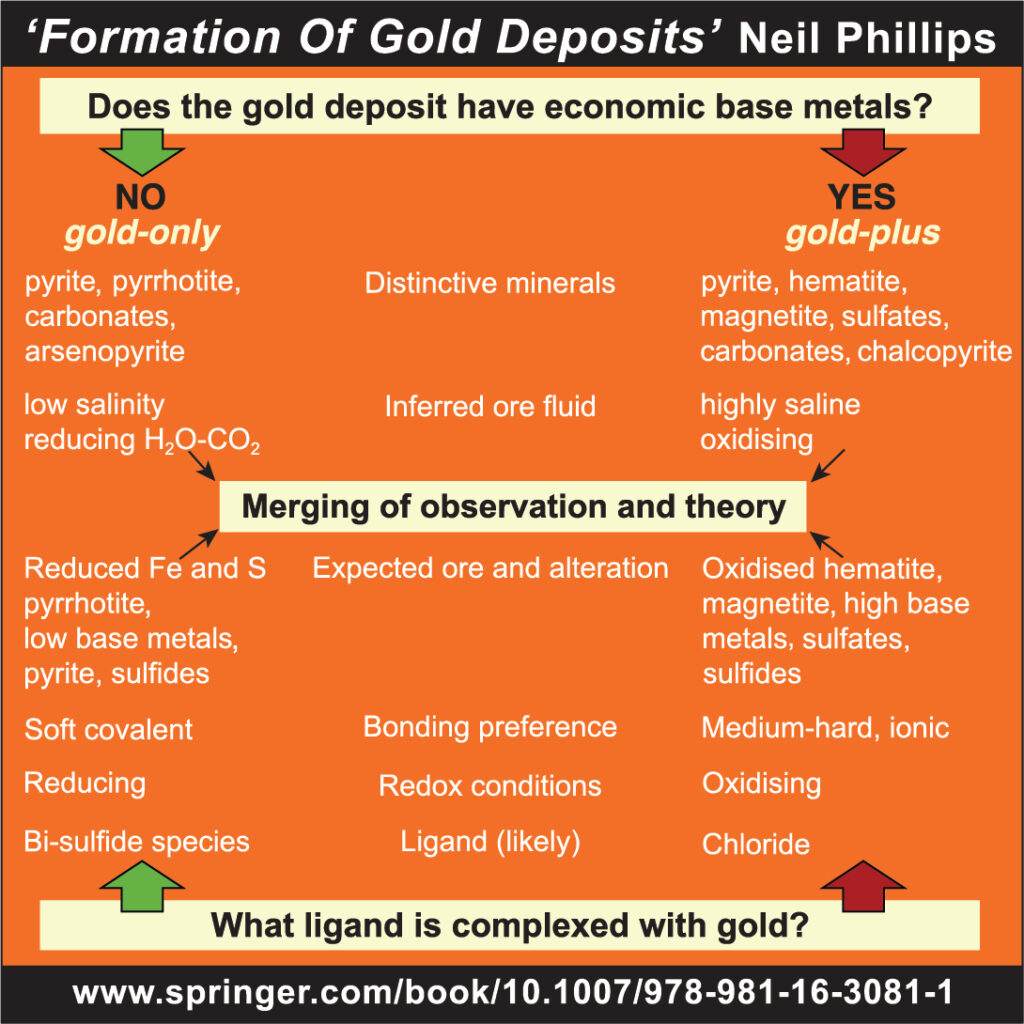- Density: 19.30 g·cm−3 [in g·cm−3 – water is 1, Pb is 11.3, Os 22.6]
- Colour: yellow (copper and cesium are the only other coloured metallic elements)
- Total all-time production worldwide: anticipated to reach 200,000 tonnes in late 2021 [author estimate]
- Physical properties: most malleable and ductile of metals, unaffected by air, water or most corrosive compounds
- Dissolves with aqua regia, cyanide and mercury
- Conversion: 31.01 tonnes equals 1 Moz.
- Modern uses: jewellery, dental, electronics, computers, bars, coins
- Monetary use: hard asset to support paper currency
- Recyling: most of the gold ever mined is still in use
- Earliest mining: alluvial mining in middle-east and Africa several thousand years ago
- Price in $US: $250 to over $2000 since 1995. Pegged to US dollar at $35 before 1980s.
- Price in terms of labour: one ounce of gold has been worth approximately one to two weeks labour [has remained in this bracket for centuries]
- Minerals with essential gold: gold [Au], maldonite [AuBi], calaverite [AuTe], other tellurides, aurostibite, rhodite, uytenbogaardtite Ag3AuS2, fischesserite (Ag3AuSe2), auricupride, petrovskaite AuAgS
- Melting point: 1064 °C
- Boiling point: 2856 °C
- Naturally-occurring isotope: Au197 only (rest have half lives of less than one year).
- Atomic weight: 79
- Atomic mass: 197.0
- Periodic table column: below Cu and Ag
- Periodic table row: after Os, Ir, Pt; before Hg, Tl, Pb, Bi
- Similar elements: include Ag, Cu, PGEs, Bi depending upon chemical environment.
- Oxidation states: -1, 1, 2, 3, 4, 5. Note +1 and +3 dominate in nature
- Electronegativity: 2.54 Pauling scale which is very high for a metal cation
- Electron configuration: [Xe] 4f14 5d10 6s1
- Ionisation energy: 1st 890.1 kJ.mol-1, 2nd 1980 kJ.mol-1
- Atomic radius 144 pm
- Covalent radius 136 +/-6 pm
- Au1+ 137 pm, very large
- Au3+ 85 pm
- Co-ordination chemistry: linear (Au1+), square planar (Au3+)
- Why is gold yellow?: Gold absorbs blue light to transfer an electron between its 5d and 6s orbitals. The 6s is unexpectedly low energy due to relativistic effects of this heavy element.
CORRECTION
After completion of the final proof of Formation of Gold Deposits, the author noted an error in his emphasis of the two oxidation states of gold, namely Au1+ and Au3+.
The relevant gold ion in the primary (unweathered) zone is Au1+. The suggestion of Au3+ being critical for gold-plus deposits is not correct: instead the difference between gold-only and gold-plus deposits is a reflection of the different ligands (bi-sulfide and chloride, respectively). Fig. 14.1 caption should read Au1+. The same error is reflected in Chapter 1 and in Fig. 14.9 where Au1+ and Au3+ should be replaced by bi-sulfide, and chloride, respectively as the likely ligands. In section 14.7, the contrast between gold-only and gold-plus is better explained by the contrasting ligand species, bi-sulfide and chloride, respectively.
No changes are required to chemical descriptions of the two ions such as the Au1+ being larger and softer and preferring covalent bonding. No change is required to Au3+ being mentioned as important in regolith (weathering) environments.















